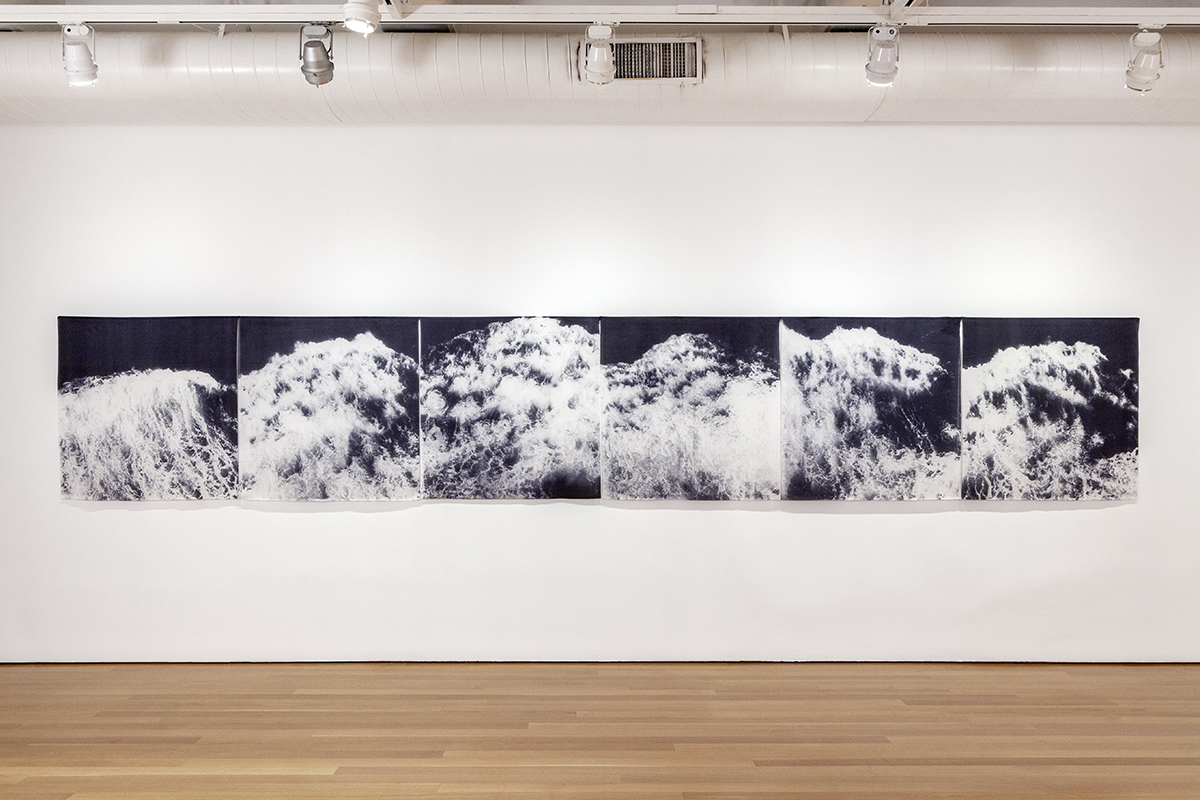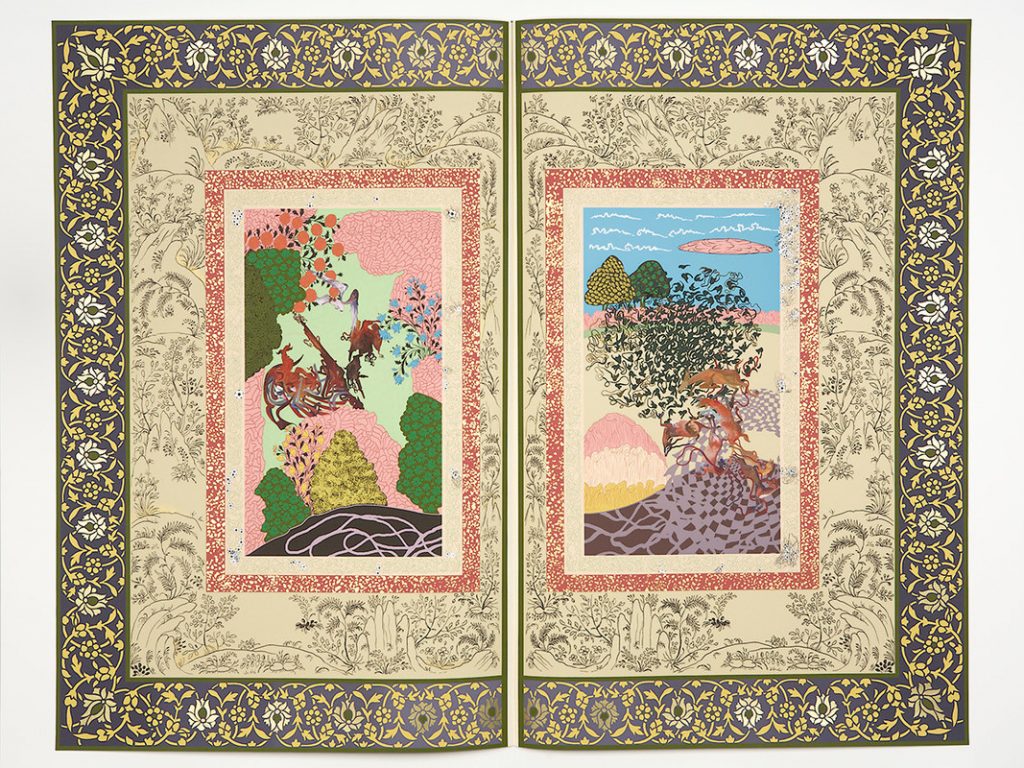Alison Rossiter was an Artist-in-Residence at FWM in the mid 1990’s. At the time of her residency, Rossiter was beginning to shift away from traditional photography and was experimenting with the abstract approach for which she is now well known. Her earlier work featured images from nature, and photographs of inanimate objects with a strong feminist voice (such as her “Bridal Satin” series of the 1980’s). Prior to her residency, she had begun to explore photograms—a process where the artist creates an image without film, instead placing objects directly on top of the paper during exposure or by manipulating the light manually through “light painting.”
Rossiter’s residency culminated in Landfall and Departure (1997), consisting of six silk habotai scarves depicting the churning ocean wake alongside six photographs of coastal rocks. Taken together, the piece proposes how landscape might act as the anchor for such a passage, with “landfall” evoking a destination and “departure” the setting out from an origin. The silk pieces, loosely threaded to one another, flow gently as a connected body echoing the motion of the journey they chronicle—its breeziness in contrast to the tumultuous crashing of the ocean portrayed across its surfaces. Conversely, the framed photographs of rocks are printed on paper using traditional darkroom processes—fixed elements from which we might leave and return to. Rossiter captures the images of the ocean near Nova Scotia from the side of a boat, and the images of rocks on Maine’s Mount Desert Island.
The work Rossiter produced during her residency acts as a record of a transitional period in her practice. In the years that followed, Rossiter fully embraced a camera-less approach to photography, and currently creates highly expressive abstract prints by processing expired photo paper from historically significant years.
Artist-in-Residence
Alison Rossiter

